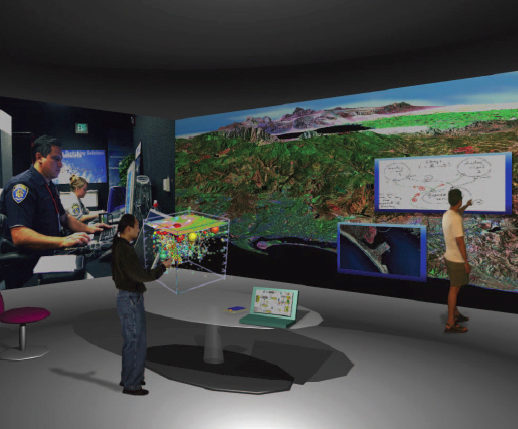Cyber-Commons: Merging Real and Virtual Worlds
January 1st, 2008
Categories: Applications, Devices, Networking, Supercomputing, Visualization

Authors
J. Leigh, M. D. BrownAbout
Cyber-mashups of very large data sets let users explore, analyze, and comprehend the science behind the information being streamed.
As longtime Communications subscribers, as well as authors of articles and contributors to special sections, notably “Blueprint for the Future of High-Performance Computing” (November 1997) and “Blueprint for the Future of High-Performance Networking” (November 2003), we appreciate the opportunity to learn from and share with the ACM community. Over the next 50 years, as computing and networking technologies advance, we’ll have to be able to harness the power of technology to address challenges involving biodiversity, the environment, medicine, energy, and more. That’s why we’re creating visualization and collaboration user interfaces to enable global virtual organizations to work together. Happy Birthday, CACM, and many more.
As educators, researchers, and specialists in networked visualization, virtual reality, and collaboration technologies, we are fortunate to work at an institution - the Electronic Visualization Laboratory at the University of Illinois at Chicago - with access to some of the most advanced “cyberinfrastructure” in the world. That term, coined by the National Science Foundation, refers to high-performance computing and communications environments that integrate data, computers, and people on a global scale in order to stimulate scientific exploration, theories, and knowledge.
For the full text article please follow this link to article on the AMC website
Citation
J. Leigh, M. D. Brown, Cyber-Commons: Merging Real and Virtual Worlds, Communications of the ACM, vol 51, no 1, pp. 82-85, January 1st, 2008.